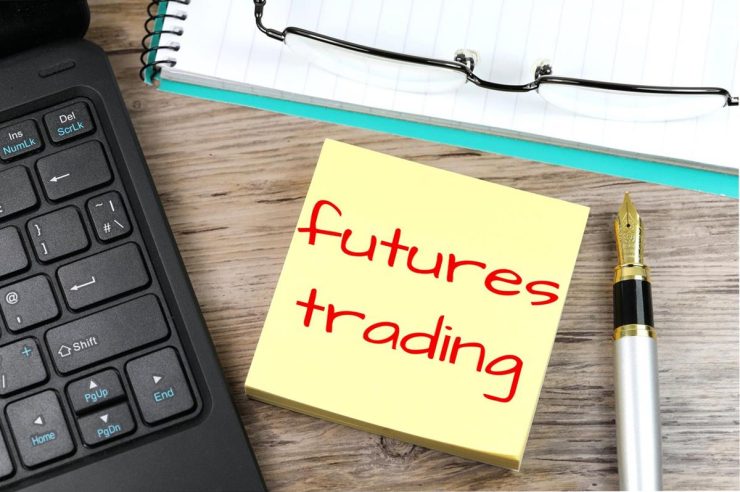As modern technology continues to evolve, financial markets have become increasingly dynamic. Futures trading is no exception – this particular investment vehicle has seen tremendous growth in recent years as more investors look for alternative ways of potentially generating returns with less risk.
This article dissects the current trends of futures trading and provides predictions about what the future holds for this lucrative form of investing. We’ll discuss why futures trade can be an attractive option for active traders and long-term investors, plus insights into how technological developments may shape the industry going forward. Read on to learn more about what lies ahead for this ever-evolving market.
The Basics of Futures Trading
Futures trading is a sophisticated financial instrument that allows investors to gain exposure to various assets, including commodities, stocks, and currencies. These contracts are agreements to buy or sell an underlying asset at a predetermined price and date in the future. Despite their complexity, futures trading has become increasingly popular among investors looking to diversify their portfolios and hedge against risk.
Understanding the basics of futures trading, from the mechanics of how they work to the potential risks and rewards involved, is crucial to becoming a successful investor in this exciting finance arena. With the proper knowledge and approach, futures trading can offer investors a valuable tool to navigate an ever-changing financial landscape. Saxo has a wide selection of educational resources to help investors get up to speed with the futures trading basics.
Exploring the Benefits of Futures Trading
Futures trading offers many advantages to investors that make it worth considering as part of their investment portfolio. By taking on a futures contract, buyers and sellers can lock in the price of an underlying asset today for delivery or purchase at some point in the future. It can protect against market volatility and enable investors to capitalize on price movements without owning the underlying security.
Additionally, since futures contracts tend to be highly leveraged, they offer potential rewards that far exceed those associated with investing directly in the underlying asset. With such leverage comes more significant risk, however – understanding how leverage works and its appropriateness is crucial for successful futures trading.
Recent Developments in the Futures Trading Market
In recent years, several developments have transformed the futures trading landscape. High-frequency trading (HFT) has become increasingly prevalent as technology has allowed traders to rapidly execute orders and take advantage of small price fluctuations. It has given rise to competitive advantages for those with access to sophisticated trading systems.
The emergence of derivatives such as options and futures also reshapes the market, offering investors new ways to hedge risk and capitalize on price movements without owning the underlying asset. These instruments are becoming increasingly accessible through online brokers, further opening the market to retail investors.
Critical Trends in Futures Trading Going Forward
Technological advances will likely continue to shape the future of futures trading. Automated trading systems and artificial intelligence (AI) could become commonplace in this arena, allowing traders to take advantage of market conditions faster.
Moving away from traditional asset classes towards more complex derivatives is also set to continue as investors seek new ways to hedge their investments and capitalize on price movements without bearing the entire risk of ownership. Finally, increased regulation could help ensure fair and transparent markets for all participants.
Analysing Potential Challenges in the Market
While the futures trading market offers investors a wealth of opportunities, it is crucial to understand the potential risks involved. Leveraged positions expose traders to greater risk than buying or selling the underlying asset outright and can result in significant losses if not monitored carefully.
In addition, liquidity can be an issue in some markets – there may only sometimes be enough buyers and sellers for certain contracts at any time. Finally, with high-frequency trading becoming increasingly prevalent, it is essential to understand strategies such as spoofing and wash trading which could lead to unfair price manipulation. Traders must be aware of these risks before entering into any deals.
How to Make Accurate Predictions in Futures Trading
Making accurate predictions in the futures trading market requires technical analysis and fundamental research. Technical analysis involves studying historical price data to identify trends and patterns that may provide insight into future movements. On the other hand, fundamental analysis involves looking at underlying economic factors such as GDP growth or interest rate changes, which could indicate how assets are likely to react in different scenarios.
Combining both approaches can help traders make informed decisions about when to enter and exit positions to potentially maximize returns while minimizing risk. It is also essential to stay up-to-date with news and developments relating to the markets, which may affect prices. By combining all these elements, investors can increase their chances of making successful trades in the futures market.
In Conclusion
Futures trading is an attractive investment option for those looking to capitalize on market movements without taking on the entire risk of owning the underlying asset. By understanding recent developments in the market, keeping up with key trends, and analyzing potential risks and challenges, investors can increase their chances of success.
Furthermore, combining technical analysis with fundamental research can help traders make accurate and informed predictions about future price movements. With knowledge, diligence and the right tools, futures trading can be a lucrative avenue for investors to pursue.



